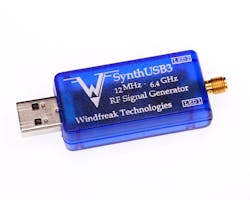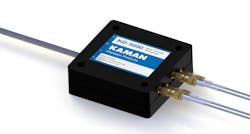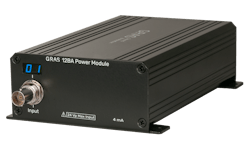The Latest in Electronics Testing Technologies for 2021
Test and measurement equipment underpins the product design process, enabling engineers to verify those products function in specified parameters before and after the manufacturing process. Testing devices and software allow engineers to validate designs and mitigate any problems that may occur, such as IC traceroutes voltages, and other specified parameters with each unique device. In this roundup, we will take a look at the latest testing technologies to hit the market in 2021.
Pendulum Instruments recently acquired EMC-Scanner company Detectus AB and have announced the first scanner for detecting EMC hotspots during product development. The SCN series offers three different sizes to fit most DUTs and combines a very high scan resolution of 0.1 mm with test volumes up to 600 x 400 x 300 mm. Test objects are put on the coordinate board, and a small near-field probe is moved in a controlled and repeatable path above the test object, registering any field emissions. The probe output signal in every position is measured by the Spectrum Analyzer and transferred to the scanner SW, where it combines the spatial information (X, Y, Z) with the spectrum in that position and then presents the detailed information.
Kaman Precision Products recently announced its KD-5600 series of digital eddy current measurement (ECM) systems for use in COTS applications for fast steering mirrors, magnetic bearing active control, shaft vibration, image stabilization, and adaptive optics. The new EMCs are designed for non-contact linear position displacement sensing applications, with the KD5656 (Full System), and KD-5690 FE (Front-End) outfitted with custom sensors, signal processing, analog to digital converter and a custom calibration system for increased precision and accuracy. The series features a high resolution, bandwidth and linearity and is equipped with a Serial Peripheral Interface Bus (SPIB) for fast data transfer. The KD-5600 series can also sample data at eight times the standard data rate. The ECMs utilize a 9D connector for reading data, power, and control signals and operate from a single power supply with a voltage range of 8-28 volts.
Spectrum Instrumentation has boosted its range of hybridNETBOX AWG products with the addition of eight high-performance models, which combine a multi-channel arbitrary waveform generator (AWG) and a digitizer in a single unit. The latest series brings the company’s total to 14 different hybridNETBOX models, with 2+2, 4+4 or 8+8 matched channels and speeds that range from 40 MS/s to 1.25 GS/s. The new models provide a choice of two or four AWG channels, with the same number of digitizer channels, and can generate almost any waveshape using 16-bit digital to analog converters (DAC). The models come equipped with output rates of either 625 MS/s or 1.25 GS/s and signal bandwidths up to 400 MHz (600 MHz as an option). At the 625 MS/s rates, the channels can be programmed to output signals with amplitudes up to ±3 V into a 50 Ohm load or ± 6V into high impedance (1 MOhm). The models running at 1.25 GS/s can output signals with ± 2.5 V into 50 Ohm and ±5 V for 1 MOhm.
Saelig has introduced a new pocket-sized 12.5MHz to 6.4GHz software-tunable RF signal generator and frequency sweeper that can be controlled and powered by any device running Windows, Linux or Android via a USB port. The SynthUSB3 dongle features programmable built-in nonvolatile flash memory, which allows the device to operate by itself without requiring a PC connection for any frequency, power, sweep, or modulation setting. The RF signal generator offers an intuitive LabVIEW-based GUI that allows users to perform data entry using a touchpad, knob, or directly with a PC keyboard and arrow keys. Power levels can be set in 0.1dBm increments, with a maximum output of 8dBm and a minimum of -50dBm. RF power setting resolution is non-linear with a finer resolution at higher output powers. On-board calibration is provided through a look-up table equipped with each SynthUSB3 device. Calibration over the entire range from 12.5MHz to 6.4GHz, and is performed at the factory and stored in the built-in flash memory.
GRAS Sound and Vibration has introduced its GRAS 12BA and 12BB Microphone Power Modules designed for engineers who need to power CCP measurement microphones with seamless integration of sensitivity data via TEDS (Transducer Electronic Data Sheet). The single-channel (12BA) and four-channel (12BB) USB-powered modules offer integrated TEDS support and are ideal for production test applications, saving time during setup and configuration. The power modules can be used with any audio analyzer, with TEDS data accessed in two ways. When paired with Audio Precision’s APx audio analyzers, TEDS can be read directly via the APx500 software. For use with other analyzers, TEDS data is available through the Mic Power Module App with a command-line interface for data output.
About the Author
Cabe Atwell
Technology Editor, Electronic Design
Cabe is a Technology Editor for Electronic Design.
Engineer, Machinist, Maker, Writer. A graduate Electrical Engineer actively plying his expertise in the industry and at his company, Gunhead. When not designing/building, he creates a steady torrent of projects and content in the media world. Many of his projects and articles are online at element14 & SolidSmack, industry-focused work at EETimes & EDN, and offbeat articles at Make Magazine. Currently, you can find him hosting webinars and contributing to Electronic Design and Machine Design.
Cabe is an electrical engineer, design consultant and author with 25 years’ experience. His most recent book is “Essential 555 IC: Design, Configure, and Create Clever Circuits”
Cabe writes the Engineering on Friday blog on Electronic Design.






